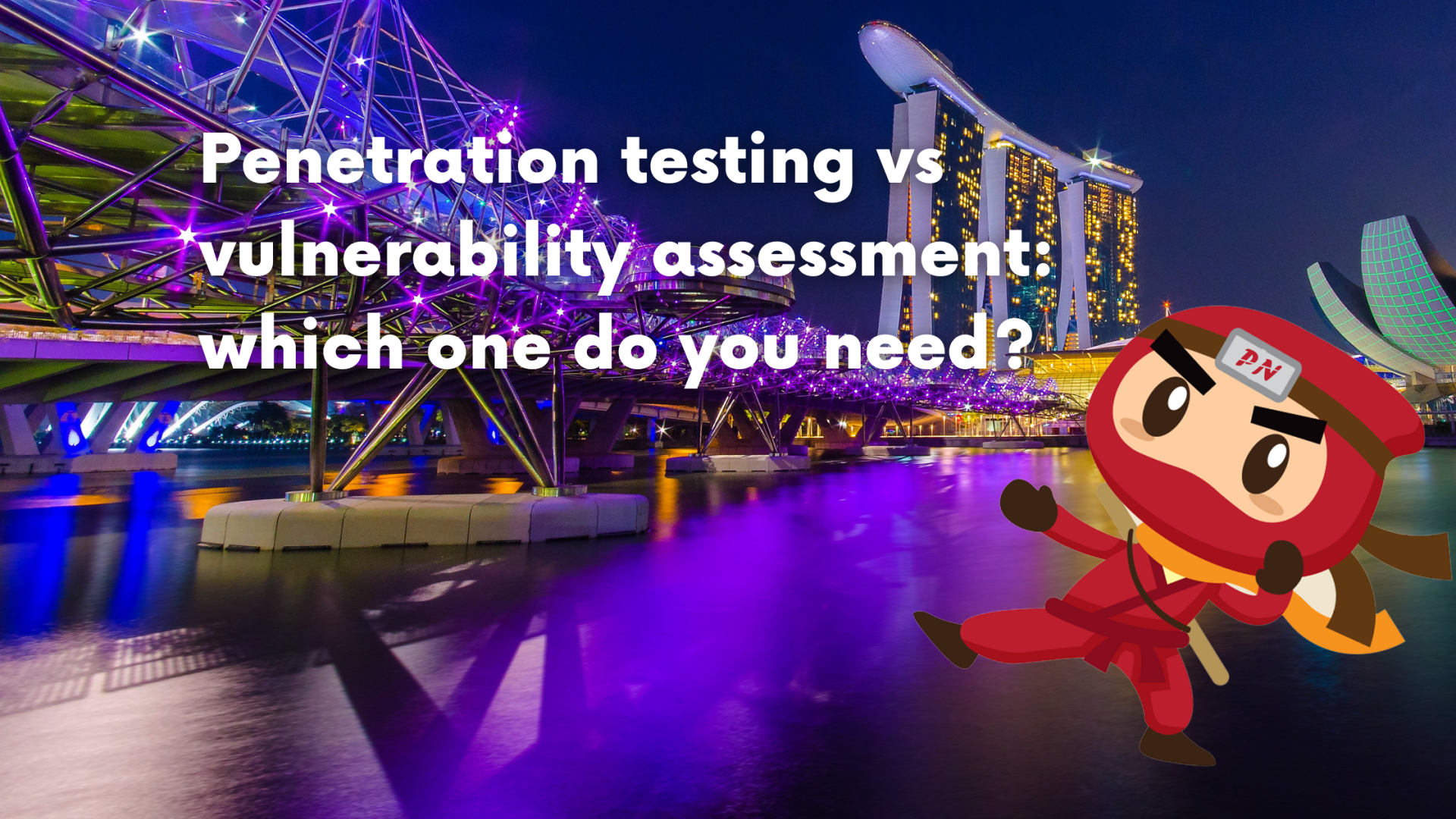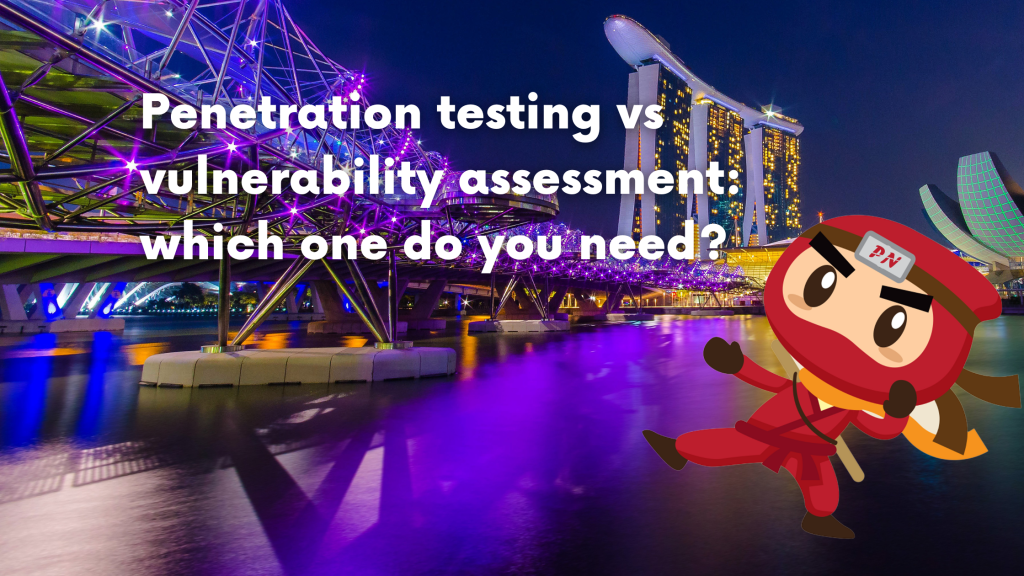KEEP IN TOUCH
Subscribe to our mailing list to get free tips on Data Protection and Cybersecurity updates weekly!







Vulnerability testing comes in two forms: Vulnerability Assessment and Penetration Testing (VAPT). Each of these tests has its own strengths, and they are often used together to make a complete analysis of the vulnerability. In short, Penetration Testing and Vulnerability Assessments are two different things that are done in the same area but usually have different results.
Vulnerability Assessment tools find out what flaws are there, but they can’t tell the difference between flaws that can be used to do damage and those that can’t. Vulnerability scanners tell companies where and what bugs are already in their code.
You can conduct a vulnerability assessment if you want to find out what vulnerabilities your organisation may have. We usually do a Vulnerability Assessment to check if there exists a vulnerability for us to acknowledge or check before the public can access either their website or online servers. This way, we will know if it is ready and safe for the users and the company to use.
Penetration tests, on the other hand, try to take advantage of a system’s flaws to see if unauthorised access or other bad things can happen and to find out which flaws pose a threat to the application. Penetration tests look for flaws that can be used to gain access and measure how bad each one is. A penetration test isn’t meant to find every flaw in a system. Instead, it’s meant to show how bad a flaw could be in a real attack. When used together, penetration testing and vulnerability assessment tools give a clear picture of an application’s flaws and the risks they pose.
If you want to check if your system is impenetrable by bad actors, then you must opt to use a Penetration Test. This way, you can know at what level of security your organisation is currently at and start building more robust cybersecurity for your organisation.

Vulnerability Assessment and Penetration Testing (VAPT) offers enterprises a more thorough application evaluation than any single test alone. The Vulnerability Assessment and Penetration Testing (VAPT) method provides an organisation with a more detailed view of the threats to its applications, allowing them to better protect its systems and data from malicious attacks.
Vulnerabilities can be found in third-party vendor applications as well as internally developed software, but the majority of these flaws are easily fixed once discovered. Using a VAPT provider such as Privacy Ninja allows IT security teams, to concentrate on mitigating critical vulnerabilities while the VAPT provider discovers and categorises vulnerabilities.
VAPT’s importance mainly clings to the organisation’s ability to be secure from any impending breaches that are waiting to happen and avoid any possibility of paying a hefty fine to the PDPC in every successful breach.
In the case of Vhive, there was a successful ransomware attack, and the organisation was made to pay a whopping S$22,000. It would have been avoided if only the VAPT provider’s Whitehat hackers had been able to find and patch the present vulnerabilities in its system.
This was also what happened in the case of Southaven Boutique, where the PDPC also imposed a financial penalty of $2,000 because there was unauthorised access to its customers’ personal data in its Point-Of-Sale system server. This could have been prevented if only a VAPT provider had been tapped to check if the server is free from any loopholes that any bad actor may exploit.

The key distinction between vulnerability assessment and penetration testing is the breadth and depth of vulnerability coverage.
The goal of vulnerability assessment is to find as many security flaws as possible (breadth over depth approach). It should be used on a regular basis to keep a network secure, especially when network changes are made (e.g., new equipment installed, services added, ports opened). It will also be useful for organisations that are not yet security mature and want to identify all potential security flaws.
When a customer claims that network security defenses are strong but wants to know if they are hack-proof, penetration testing is preferable (depth over breadth approach).
Another distinction related to the previous distinction is the degree of automation. Vulnerability assessment is typically automated, allowing for a broader vulnerability coverage, whereas penetration testing is a combination of automated and manual techniques, allowing for a deeper dive into the weakness.
The third distinction is in the professionals who perform both security assurance techniques. Because automated testing, which is widely used in vulnerability assessment, does not require a high level of skill, it can be performed by members of your security department.
However, the company’s security personnel may discover vulnerabilities that they are unable to patch and choose not to include them in the report. As a result, a third-party vulnerability assessment vendor may be more useful. Penetration testing, on the other hand, necessitates a much higher level of expertise (due to its manual nature) and should always be outsourced to a penetration testing services provider.

The distinctions between vulnerability assessment and penetration testing demonstrate that both security testing services are worthwhile for network security. Vulnerability assessment is useful for security maintenance, whereas penetration testing identifies real security flaws.
Both services are only available if you hire a high-quality vendor such as as Privacy Ninja, who understands and, more importantly, translates the difference between penetration testing and vulnerability assessment to the customer.
Thus, a good vendor in penetration testing combines automation with manual work and does not provide false positives in the report. Simultaneously, during vulnerability assessment, the vendor discovers a wide range of potential network vulnerabilities and reports them based on their importance to the customer’s business.
Also Read: The Singapore financial services and markets bill: Everything you need to know